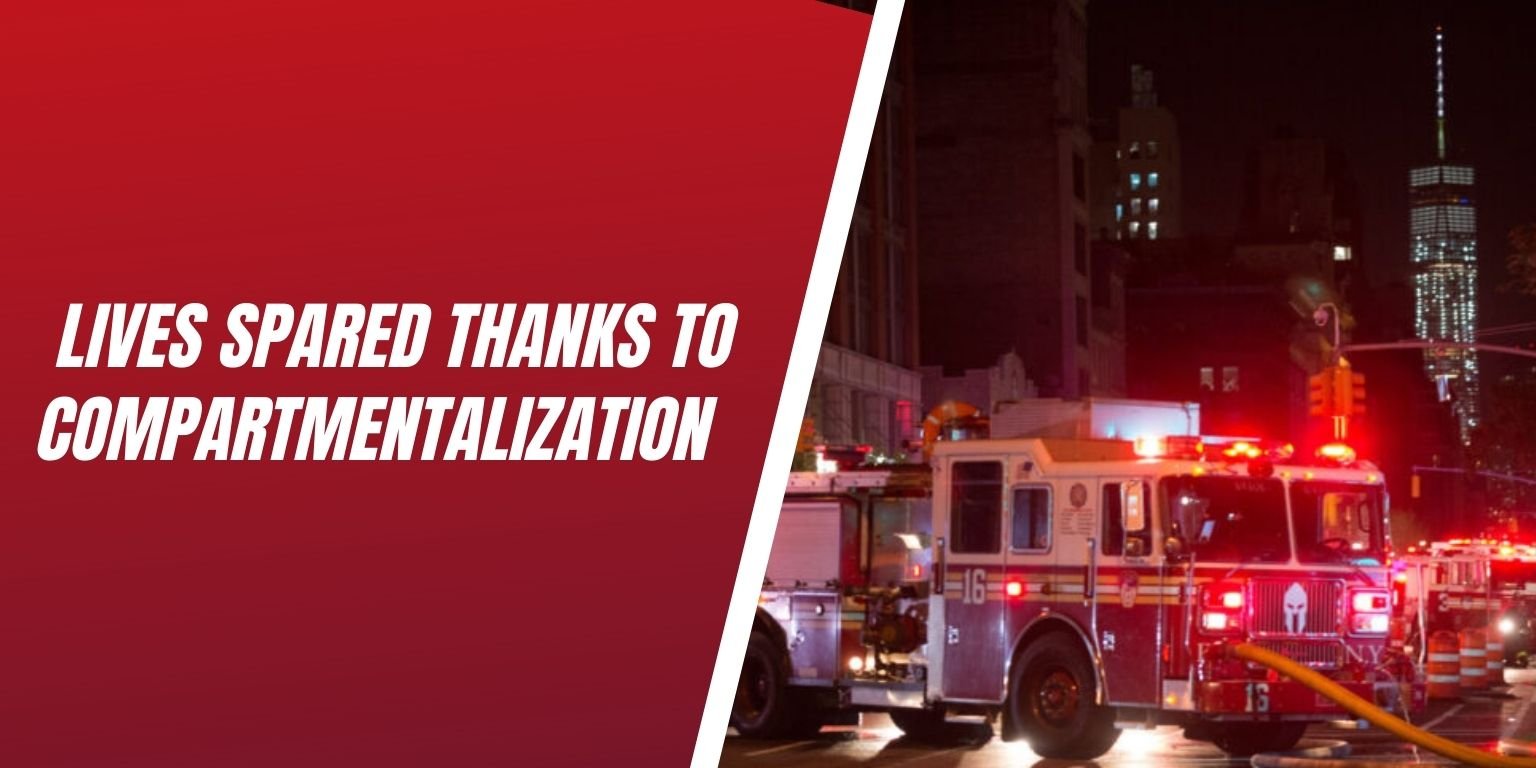
February 3rd, 2022 a fire broke out at a rehabilitation center in Rhode Island. The intense flames and smoke resulted in 24 people being hospitalized due to smoke inhalation. Thankfully, the damage done was minimal compared to what could have happened. So, what prevented this fire emergency from becoming a tragedy? Operative active and passive fire protection systems.
The passive fire protection system was hard at work as, according to authorities, the fire was contained to one room within the building (compartmentalization). This prevented fire and smoke from spreading which allowed for occupants to make their exit from the building while emergency crews entered to assist in occupant evacuation. While the fire was contained, the active fire protection system kicked in, the sprinkler system assisted the passive fire protection system and aided in fire extinguishment.
The Difference Makers
Compartmentalizing is imperative when designing the overall layout of a building as it is a big component to the passive fire protection system. Containing the fire is key to keeping everyone inside the building safe while exiting. If it weren’t for compartmentalization, the fire and smoke would have spread throughout the building within seconds. Resulting in way more hospitalizations or worse, deaths.
- Fire Barriers: Used for many purposes, including separating occupancies, isolating hazardous areas, creating a horizontal exit, enclosing an exit, or creating a shaft. These barriers have a fire-resistance rating in hours, specified by the code.
- Smoke Barriers: Used to restrict the movement of smoke and usually have a fire-resistance rating specified in the code. In new healthcare occupancies, for example, the smoke barrier must have a one-hour-fire-resistance rating. In existing healthcare occupancies, the requirement is reduced to a half-hour fire-resistance rating.
- Smoke Partitions: Designed to limit the movement of smoke and are not as substantial as smoke barriers. Smoke partitions generally do not have a fire-resistance rating and may terminate at a ceiling.
Fire Doors are another component to the passive fire protection system that prevents the spread of fire and smoke during an emergency. Fire doors are to be shut at all times as fires can break out at any point in time. If the fire doors within this facility were open at the time of the fire, this could have had a way different outcome in the worst way. Fire doors must be inspected and maintained to stay in compliance with the National Fire Protection Association (NFPA).
Per the current NFPA 80 code, fire doors have 13 points of inspection.
- No open holes or breaks exist in surfaces of either the door or frame.
- Glazing, vision light frames, and glazing beads are intact and securely fastened in place, if so equipped.
- The door, frame, hinges, hardware, and noncombustible threshold are secured, aligned, and in working order with no visible signs of damage.
- No parts are missing or broken.
- Door clearances at the door edge to the frame, on the pull side of the door, do not exceed clearances listed in 4.8.4 and 6.3.1.
- The self-closing device is operational, that is, the active door completely closes when operated from the full open position.
- If a coordinator is installed, the inactive leaf closes before active leaf.
- Latching hardware operates and secures the door when it is in the closed position.
- Auxiliary hardware items that interfere or prohibit operation are not installed on the door or frame.
- No field modifications to the door assembly have been performed that void the label.
- Gasketing and edge seals, where required, are inspected to verify their presence and integrity."
Fire and Smoke Dampers live above the ceiling within the ductwork. They may be out of sight but never question their purpose as they are an important part to keeping your facility safe in the event of a fire. Dampers function to shut close when fire and smoke is detected, which contains it to one specific area of the building. Again, allows for occupants to escape and emergency crews to enter and locate the fire. Fire and smoke dampers should be inspected regularly as they must also stay in compliance with the NFPA.
- Fire Damper - NFPA 80 – Section 19.4. Each damper shall be tested and inspected one year after installation. The test and inspection frequency shall then be every 4 years, except in hospitals, where the frequency shall be 6 years.
- Smoke Damper - NFPA 105 – Section 6.5. Each damper shall be tested and inspected one year after installation. The test and inspection frequency shall then be every 4 years, except in hospitals, where the frequency shall be 6 years.
Don’t underestimate the power of compartmentalization, fire doors and fire/smoke dampers, as it saved the lives of many residents on February 3rd, 2022.
Our job is to ensure your building never experiences a fire tragedy. There are specific required tasks that must take place in effort to prevent this from happening and LSS Life Safety Services is your trusted expert. Contact our team today for all your passive fire protection needs.
Providing professional service in fire safety inspections, repairs and installations. You’re Safe with us.

